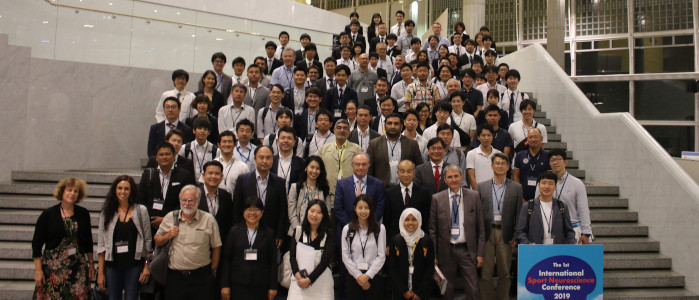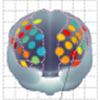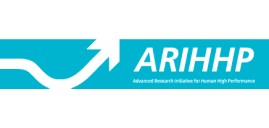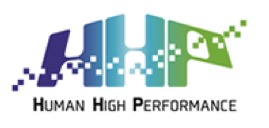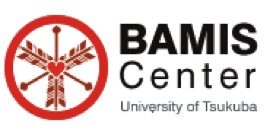Welcome to the Okamoto & Soya Lab!
Brains and Brawn, One and the Same.
Development the best physical exercise program
for "Brain fitness"
Very-light-intensity Exercise as Minimal Intensity Threshold for Activating Dorsal Hippocampal Neurons: Evidence from Rat Physiological Exercise Model. (Hiraga et al.) was accepted by Biochemical and Biophysical Research Communications. !
Light-exercise-induced dopaminergic and noradrenergic stimulation in the dorsal hippocampus: Using a rat physiological exercise model. (Hiraga et al.) was accepted by FASEB. !
Promoting arousal associated with physical activity with the vitamin B1 derivative TTFD. (Hata et al.) was accepted by The Journal of Physiological Sciences. !
Neural mechanisms of the relationship between aerobic fitness and working memory in older adults: An fNIRS study. (Hyodo et al.) was accepted by Imaging Neuroscience. !
Accelerated Fear Extinction by Regular Light-Intensity Exercise: A Possible Role of Hippocampal BDNF-TrkB Signaling. (Shimoda et al.) was accepted by Medicine & Science in Sports & Exercise. !
Improvement of mnemonic discrimination with acute light exercise is mediated by pupil-linked arousal in healthy older adults (Suwabe et al.) was accepted by Neurobiology of Aging. !
Groove Rhythm Enhances Exercise Impact on Prefrontal Cortex Function in Groove Enjoyers. (Fukuie et al.) was accepted by Neuroscience. !
Pupil dynamics during very light exercise predict benefits to prefrontal cognition. (Kuwamizu et al.) was accepted by Neuroimage. !
A possible contribution of the locus coeruleus to arousal enhancement with mild exercise: evidence from pupillometry and neuromelanin imaging (Yamazaki et al.) was accepted Cerebral Cortex Communications. !
Mild exercise improves executive function with increasing neural efficiency in the prefrontal cortex of older adults (Byun et al.) was accepted by GeroScience. !
Look into my eyes: What can eye-based measures tell us about the relationship between physical activity and cognitive performance? (Zou et al.) was accepted by Sport Health Sci. !
Pupil-linked arousal with very light exercise: pattern of pupil dilation during graded exercise (Kuwamizu et al.) was accepted by The journal of physiological sciences. !
Acute Normobaric Hypoxia Lowers Executive Functions among Young Men despite Increase of BDNF Concentration (Chroboczek et al.) was accepted by International journal of environmental research and public health. !
Cognitive fatigue due to exercise under normobaric hypoxia is related to hypoxemia during exercise (Ochi et al.) was accepted by Scientific Reports. !
Taurine supplementation enhances endurance capacity by delaying blood glucose decline during prolonged exercise in rats (Komine et al.) was accepted by Amino acids. !
Groove rhythm stimulates prefrontal cortex function in groove enjoyers (Fukie et al.) was accepted by Scientific Reports. !
Long-term light and moderate exercise intervention similarly prevent both hippocampal and glycemic dysfunction in presymptomatic type 2 diabetic rats (Jesmin et al.) was accepted by he Journal of Physical Fitness and Sports Medicine. !
Validation of the parent version of the Strengths and Difficulties Questionnaire (SDQ) to screen mental health problems among school-age children in Mongolia was accepted by BMC Psychiatry. !
Exercise-induced hormone response is cooperatively regulated by hypothalamic arginine vasopressin and corticotrophin-releasing hormone (Takahashi et al.) was accepted by Neuroendocrinology. !
Benefit of human moderate running boosting mood and executive function coinciding with bilateral prefrontal activation( et al.) was accepted by Scientific Reports. !
Differences in exercise capacity and physiological responses in Wistar rats among breeders (Takahashi et al.) was accepted by Experimental Animals. !
Academic Achievement Among Children: A Randomized Controlled Trial was accepted by Pediatrics. !
omparison Between the Effects of Continuous and Intermittent Light-Intensity Aerobic Dance Exercise on Mood and Executive Functions in Older Adults (Hyodo et al.) was accepted by Frontiers in Aging Neuroscience. !
Socioeconomic and lifestyle factors associated with mental health problems among Mongolian elementary school children (Aoki et al.) was accepted by Social Psychiatry and Psychiatric Epidemiology. !
High-intensity Intermittent Training Enhances Spatial Memory and Hippocampal Neurogenesis Associated with BDNF Signaling in Rats (Okamoto et al.) was accepted by Cerebral Cortex. !
Spontaneous Eye Blink Rate Connects Missing Link between Aerobic Fitness and Cognition. (Kuwamizu et al.) was accepted by Med Sci Sports Exerc. !
Preventive role of regular low-intensity exercise during adolescence in schizophrenia model mice with abnormal behaviors (Koizumi et al.) was accepted by Biochem Biophys Res Commun. !
Short term life style intervention program through daily walking improves circulatory low HDL level in rural Bangladeshi women (Jesmin et al.) was accepted by The Journal of Physical Fitness and Sports Medicine. !
(Positive mood while exercising influences beneficial effects of exercise with music on prefrontal executive function: a functional NIRS study (Suwabe et al.) was accepted by Neuroscience. !
Acute Sprint Interval Exercise Increases Both Cognitive Functions and Peripheral Neurotrophic Factors in Humans: The Possible Involvement of Lactate (Suwabe et al.) was accepted by Front. Neurosci. !
Dysregulation of Glycogen Metabolism with Concomitant Spatial Memory Dysfunction in Type 2 Diabetes: Potential Beneficial Effects of Chronic Exercise (Soya et al.) was accepted by Adv Neurobiol. !
Endurance and Brain Glycogen: A Clue Toward Understanding Central Fatigue (Matsui et al.) was accepted by Adv Neurobiol. !
The effectiveness of exercise interventionfor academic achievement, cognitivefunction, and physical health amongchildren in Mongolia: a cluster RCT studyprotocol was accepted by BMC Public Health. !
Leptin in hippocampus mediates benefits of mild exercise by an antioxidant on neurogenesis and memory (Yook et al.) was accepted by Proc. Natl. Acad. Sci. USA. !
Tyrosine as a Mechanistic-Based Biomarker for Brain Glycogen Decrease and Supercompensation With Endurance Exercise in Rats: A Metabolomics Study of Plasma (Matsui et al.) was accepted by Front. Neurosci. !
Rapid stimulation of human dentate gyrus function with acute mild exercise (Suwabe, Byun et al.) was accepted by Proc. Natl. Acad. Sci. USA !
Riluzole reduces amyloid beta pathology, improves memory, and restores gene expression changes in a transgenic mouse model of early-onset Alzheimer's disease (Okamoto et al.) was accepted by Transl Psychiatry !
Thiamine tetrahydrofurfuryl disulfide promotes voluntary activity through dopaminergic activation in the medial prefrontal cortex(Saiki et al.) was accepted by Scientific Reports !
Hypoxia-induced lowered executive function depends on arterial oxygen desaturation (Ochi et al.) was accepted by The Journal of Physiological Sciences. !
Hyper-hippocampal glycogen induced by glycogen loading with exhaustive exercise (Soya et al.) was accepted by Scientific Reports !
A transferable high-intensity intermittent exercise improves executive performance in association with dorsolateral prefrontal activation in young adults (Kujach, Byun et al.) was accepted by NeuroImage !
Role of the astroglial glutamate exchanger xCT in ventral hippocampus in resilience to stress was accepted by Neuron !
Aerobic fitness associates with mnemonic discrimination as a mediator of physical activity effects: evidence for memory flexibility in young adults (Suwabe et al.) was accepted by Scientific Reports!
Astrocytic glycogen-derived lactate fuels the brain during exhaustive exercise to maintain endurance capacity (Matsui et al.) was accepted by Proc. Natl. Acad. Sci. USA!

2024/2/5
NHK WORLD -New Findings on Walking and Running-

2021/2/26
Researchers Find The Missing Link For Why Exercise Makes You Smarter

2018/10/24
Even a 10-Minute Walk May Be Good for the Brain

2018/10/02
Study Suggests Light Exercise Helps Memory

2015/12/09
Does Exercise Help Keep Our Brains Young?

2014/05/07
How 10 minutes of miid exercise gives your brain a boost?

2012/9/12
How Testosterone May Alter The Brain After Exercise

2012/2/22
How Exercise Fuels the Brain

2011/1/19
Brains and Brawn

2009/9/16
What Sort of Exercise Can Make You Smater?

